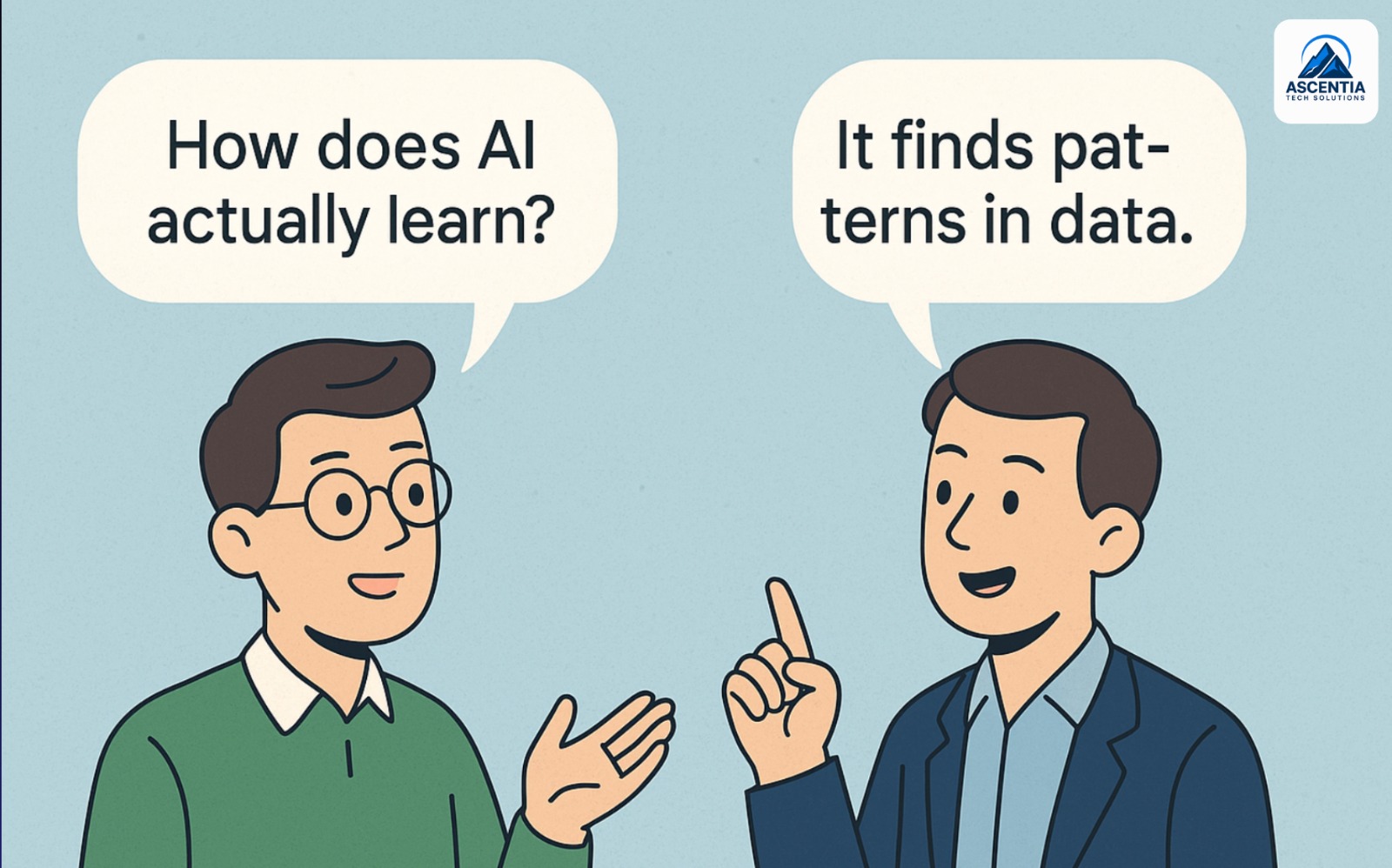If someone told you a computer could learn to predict your daily revenue — without writing a single rule — you’d probably raise an eyebrow.
But that’s exactly how modern AI works.
And it all starts with something as simple as… ice cream.
💡 What This Post Is About
In our last post, we explained how AI isn’t magic — it learns from data, not hardcoded instructions.
This time, we’ll show how that learning actually works — using an example anyone can understand: predicting ice cream sales based on the weather.
We’ll also show how this simple idea evolves into the smarter AI tools you’re hearing about today — from machine learning to deep learning to generative AI.
🍦 The Ice Cream Story: Learning from Patterns
Let’s say you own a small ice cream business.
You start noticing something:
On hotter days, your sales go up.
So you start tracking it.
- On a 24.5°C day → you made $534
- On a 26°C day → you made $625
- On a 30°C day → $740
After collecting a bunch of days like this, you make a table with two columns:
- Temperature (°C)
- Revenue ($)
Now you ask: Can I predict future sales based on tomorrow’s forecast?
That’s where Machine Learning comes in.
Instead of writing a rule like “If temp > 30, then revenue = $800”…
You let the model find the relationship between temperature and revenue — on its own.
🧠 How It Works (Simple Linear Regression)
This is the foundation of how AI learns:
It looks at real data and tries to find a pattern.
In this case, the pattern is a straight line:
As the temperature goes up, revenue goes up too.
That line is called a linear regression model. Once it’s learned the pattern, it can predict things like:
If tomorrow is 35°C, your expected revenue is $820.
You never told it the rule — it learned it by connecting the dots.
That’s the core idea behind all of Machine Learning.
🔄 But What Happens As Things Get More Complex?
The ice cream example is simple — one input, one output, one clean pattern.
But in real life?
- Emails change every day
- Customer behavior is unpredictable
- Photos, audio, and text have wild variation
That’s why AI has evolved. Here’s how the learning deepens:
🔍 The Evolution of Pattern Learning
1. Machine Learning (ML): Classic Pattern Finding
- Focus: Structured data like spreadsheets
- Learns: From labeled examples (e.g., email → spam or not)
- Tools: Decision trees, logistic regression, clustering
- Use Cases: Sales forecasting, fraud detection, churn prediction
“ML is about automating pattern recognition from data.”
— Andrew Ng
2. Deep Learning (DL): Learning from Raw Stuff
- Focus: Unstructured data (images, audio, text)
- Learns: By building layers of understanding (e.g., edges → shapes → faces)
- Tools: Neural networks, CNNs, RNNs
- Use Cases: Facial recognition, speech-to-text, medical image analysis
💡 Cool insight:
In image models, early layers learn basic stuff (lines, colors).
Later layers learn deeper features (like a dog’s nose or a smile).
That’s why DL can recognize your dog in a photo — no rule writing needed.
3. Generative AI (GenAI): Language That Understands You
- Focus: Understanding and generating human-like text (and more)
- Learns: Context, grammar, tone — from billions of examples
- Tools: Transformers, self-attention, embeddings
- Use Cases: Chatbots, content creation, coding assistants, search
📚 LLMs like ChatGPT are trained by predicting the next word — over and over — across massive datasets.
Then they learn the deeper patterns of how language works:
Not just grammar, but meaning, nuance, and intent.
Add tools like Retrieval-Augmented Generation (RAG), and these models can even look up live information, blend it with what they know, and respond like a pro.
🧰 Real-World Takeaway
The next time someone says “AI finds patterns,”
you can think back to our ice cream story.
AI doesn’t “know” things like humans do.
But it’s trained — like a student — to make sense of data and improve with practice.
That means:
- You don’t have to write every rule
- The system gets smarter with more examples
- And it can adapt when things change
That’s not magic.
That’s math + data + really smart engineering.
🙌 Wrap Up
From predicting ice cream sales to generating fluent conversations, AI learns the same way:
By seeing enough examples and discovering patterns we might miss.
As AI evolves, so do the possibilities — even for small teams and ministries with limited resources.
You don’t need to become a machine learning expert.
You just need to understand the basics — and ask the right questions.
👉 Want to Build Smarter Tools?
At Ascentia Tech Solutions, we help small businesses, nonprofits, and Kingdom-driven leaders use AI that’s:
- Simple
- Practical
- And people-first
Curious about bringing this kind of learning power into your team, product, or project? Subscribe to our newsletter or contact us for a free AI consultation.

